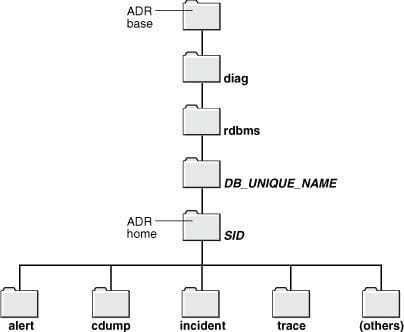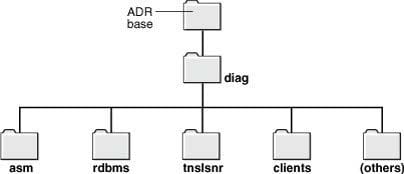Exam Details
Exam Code
:1Z0-053Exam Name
:Oracle Database 11g: Administration IICertification
:Oracle CertificationsVendor
:OracleTotal Questions
:736 Q&AsLast Updated
:Apr 12, 2025
Oracle Oracle Certifications 1Z0-053 Questions & Answers
-
Question 361:
Which two statements are true regarding Health Monitor checks in Oracle Database 11g? (Choose two.)
A. Health Monitor checks can be used to scan the contents of the redo log and archive logs for accessibility and corruption.
B. Health Monitor checks can be used to verify the integrity of database files and report failures if these files are inaccessible, corrupt or inconsistent.
C. Health Monitor checks can be used to verify the contents of dictionary entries for each dictionary object and fix it automatically.
D. Health Monitor checks are always initiated manually when there is some critical error.
-
Question 362:
View the Exhibit to examine the Automatic Database Diagnostic Monitor (ADDM) tasks. You executed the following commands:
SQL> VAR tname VARCHAR2(60);
SQL> BEGIN
:tname := 'my_instance_analysis_mode_task';
DBMS_ADDM.INSERT_SEGMENT_DIRECTIVE(:tname,'Sg_directive','SCOTT'); END;
Which statement describes the consequence?
Exhibit:

A. The ADDM task is filtered to suppress the Segment Advisor suggestions for the SCOTT schema.
B. The ADDM task is filtered to produce the Segment Advisor suggestions for the SCOTT schema only.
C. The PL/SQL block produces an error because the my_instance_analysis_mode_task task has not been reset to its initial state.
D. All subsequent ADDM tasks including my_instance_analysis_mode_task are filtered to suppress the Segment Advisor suggestions for the SCOTT schema.
-
Question 363:
Which statements are true regarding the creation of an incident package file by using the EM Workbench Support? (Choose all that apply.)
A. You can add or remove the trace files to the package.
B. You can create the incremental incident package ZIP file for new or modified diagnostic information for the incident package already created.
C. You can add SQL test cases to the incident package.
D. You cannot create an incremental incident package when the physical files are purged from the ADR.
-
Question 364:
You plan to collect the Automatic Workload Repository (AWR) data every Monday morning for a month. You want Oracle Database to automatically create a baseline every Monday and remove the old baseline. What is the correct action to achieve this?
A. Create and populate a SQL Tuning Set from the AWR on every Monday.
B. Change the RETENTION setting for the AWR snapshots to 7 days on Monday.
C. Create a repeating baseline template.
D. Insert a finding directive for future ADDM tasks.
-
Question 365:
Which tasks can be accomplished using the Enterprise Manager Support Workbench in Oracle Database 11g? (Choose all that apply.)
A. Generate reports on data failure such as data file failures.
B. You can track the Service Request (SR) and implement repairs.
C. You can package and upload diagnostic data to Oracle Support.
D. You can manually run health checks to gather diagnostic data for a problem.
-
Question 366:
Which statements are true regarding the concept of problems and incidents in the fault diagnosability infrastructure for Oracle Database 11g? (Choose all that apply.)
A. Only the incident metadata and dumps are stored in the Automatic Diagnostic Repository (ADR).
B. The problem key is the same as the incident number.
C. The database sends an incident alert to the Oracle Enterprise Manager Database Home page.
D. Every problem has a problem key, which is a text string that describes the problem.
E. The database makes an entry into the alert log file when problems and incidents occur.
-
Question 367:
You need to perform a block media recovery on the tools01.dbf data file in the SALES database by using Recovery Manager (RMAN).
Which two are the prerequisites to perform this operation? (Choose two)
A. You must configure block change tracking file
B. You must have first level 1 backups for RMAN to restore blocks
C. You must ensure that the SALES database is mounted or open
D. You must have full or level 0 backups for RMAN to restore blocks
E. You must take the tools01.dbf data file offline before you start a block media recovery
-
Question 368:
View the Exhibit and note the contents of V$DIAG_INFO.
Which statement is true about the ADR?
Exhibit: A. The text alert log file will be available in Diag Trace

B. A copy alert log file will be kept in Diag Incident for every incident.
C. The XML version of the alert log file will be available in Diag Trace.
D. An Automatic Database Diagnostic Management (ADDM) report is generated and stored in the Health Monitor whenever an incident occurs.
-
Question 369:
Identify the three predefined server-generated alerts. (Choose three.)
A. Drop User
B. Tablespace Space Usage
C. Resumable Session Suspended
D. Recovery Area Low On Free Space
E. SYSTEM Tablespace Size Increment
-
Question 370:
Examine the following values of the initialization parameters in the database having the SID ORCL:
BACKGROUND_DUMP_DEST=/u01/app/oracle/product/11.1.0/db_1/bdump USER_DUMP_DEST=/u01/app/oracle/product/11.1.0/db_1/udump CORE_DUMP_DEST=/u01/app/oracle/product/11.1.0/db_1/cdump DIAGNOSTIC_DEST=
The environment variables have the following value:
ORACLE_BASE=/u01/app/oracle ORACLE_HOME=/u01/app/oracle/product/11.1.0/db_1
What is the location of the Automatic Diagnostic Repository (ADR) home?
A. /u01/app/oracle/product/11.1.0/db_1
B. /u01/app/oracle
C. $ORACLE_HOME/bdump
D. $ORACLE_HOME/log
Related Exams:
1Z0-020
Oracle8i: New Features for Administrators1Z0-023
Architecture and Administration1Z0-024
Performance Tuning1Z0-025
Backup and Recovery1Z0-026
Network Administration1Z0-034
Upgrade Oracle9i/10g OCA to Oracle Database OCP1Z0-036
Managing Oracle9i on Linux1Z0-041
Oracle Database 10g: DBA Assessment1Z0-052
Oracle Database 11g: Administration Workshop I1Z0-053
Oracle Database 11g: Administration II
Tips on How to Prepare for the Exams
Nowadays, the certification exams become more and more important and required by more and more enterprises when applying for a job. But how to prepare for the exam effectively? How to prepare for the exam in a short time with less efforts? How to get a ideal result and how to find the most reliable resources? Here on Vcedump.com, you will find all the answers. Vcedump.com provide not only Oracle exam questions, answers and explanations but also complete assistance on your exam preparation and certification application. If you are confused on your 1Z0-053 exam preparations and Oracle certification application, do not hesitate to visit our Vcedump.com to find your solutions here.

